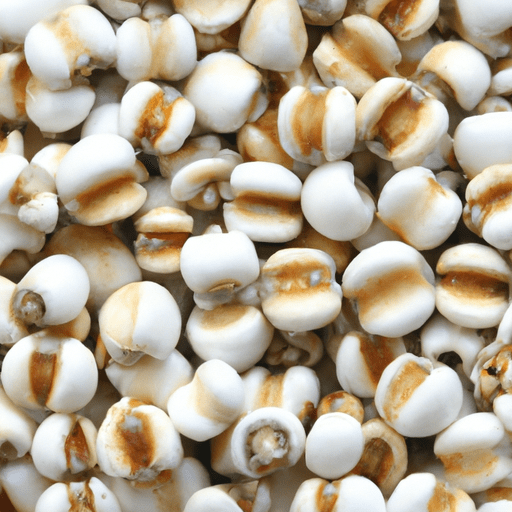Discovering Job’s Tears: A Nutritious and Versatile Grain
Are you looking to add a unique and healthy ingredient to your kitchen pantry? Look no further than Job’s Tears! This ancient grain, also known as coix seeds or Chinese pearl barley, offers a wonderful combination of taste, versatility, and nutritional benefits. In this blog post, we will dive into the world of Job’s Tears, exploring its flavors, uses in cooking, nutritional value, and fascinating history.
Uncovering the Flavor Profile
Job’s Tears possess a mild, nutty taste, making them a versatile addition to a wide range of dishes. Their slightly chewy texture sets them apart from other grains and adds a delightful contrast to various culinary creations. Whether you prefer to showcase their unique flavor or use them as a subtle background ingredient, Job’s Tears is sure to elevate your cooking endeavors.
Culinary Applications
Soups and Stews
One of the most popular ways to use Job’s Tears is in soups and stews. Their ability to absorb flavors and release starch creates a hearty and comforting base for numerous recipes. The grains become tender as they cook, offering a pleasant bite and adding substance to your dish. Job’s Tears harmonize beautifully with vegetables, legumes, and meats, infusing the broth with their distinct nutty essence.
Porridge and Congee
For a nourishing breakfast or a soothing evening meal, Job’s Tears can be transformed into a delightful porridge or congee. By simmering the grains in a flavorful liquid, such as broth or milk, they develop a creamy consistency. Top it off with your favorite fruits, nuts, or honey, and indulge in a comforting bowl of goodness.
Salads and Pilafs
To introduce a new grain to your salad repertoire, Job’s Tears can be your go-to choice. Tossed with fresh vegetables, herbs, and dressings, they bring a delightful chewiness that complements the crispness of the produce. Additionally, Job’s Tears can be used as a versatile base for pilafs, absorbing the aromatics and adding an interesting texture to the dish.
Nutritional Powerhouse
Apart from their satisfying taste and culinary versatility, Job’s Tears offer a wealth of nutritional benefits. Packed with dietary fiber, protein, and essential minerals such as magnesium, phosphorus, and iron, they contribute to a balanced and wholesome diet. Additionally, Job’s Tears are naturally gluten-free, making them a suitable choice for individuals with gluten sensitivities or those following a gluten-free lifestyle.
A Glimpse into History
Job’s Tears have a rich history that can be traced back thousands of years. Believed to originate from Southeast Asia, they have played a significant role in various Asian and African cultures. In China, Job’s Tears have been used in traditional medicine as well as culinary practices for centuries. Their versatile nature and health benefits have contributed to their popularity and made them an essential ingredient in many regional cuisines.
Fun Facts
- The name “Job’s Tears” is derived from their tear-like shape and the biblical figure, Job, who is said to have wept for his afflicted state.
- In traditional Chinese medicine, Job’s Tears are believed to possess various healing properties, such as supporting digestion and protecting the spleen.
- Job’s Tears have been used as ornamental plants due to their attractive bead-like appearance.
Embrace the Versatility and Nutritional Value of Job’s Tears
Next time you’re looking to experiment in the kitchen or add a healthy twist to your dishes, consider incorporating Job’s Tears. With their mild nutty flavor, satisfying texture, and impressive nutritional profile, they are sure to become a favorite staple in your pantry. Whether you choose to use them in soups, salads, or porridges, you’ll be embarking on a culinary journey rich in taste and heritage. So go ahead and discover the wonders of Job’s Tears – your tastebuds and body will thank you!
Sources:
Job’s Tears
Origin: Job’s Tears (Coix lacryma-jobi) is a tropical grain that belongs to the grass family Poaceae. It is native to Southeast Asia but has spread to other regions of the world like India, China, and the United States.
Common Uses: The seeds of Job’s Tears have various culinary uses. They can be cooked and eaten as a whole grain, ground into flour, or used to make beverages such as tea or alcoholic drinks. In some Asian cuisines, Job’s Tears is added to soups, stews, desserts, and porridge. The young shoots and leaves of the plant are also consumed as vegetables in some cultures.
Nutritional Benefits: Job’s Tears is a nutritious ingredient that contains several essential nutrients. It is a good source of dietary fiber, providing about 8 grams per 100 grams. The grain is also rich in protein and contains minerals like potassium, magnesium, and phosphorus. Additionally, Job’s Tears is gluten-free, making it a suitable option for individuals with gluten sensitivities or celiac disease.
Unique Properties and Historical Significance: Job’s Tears has a distinctive appearance with tear-shaped, bead-like seeds. Traditionally, these seeds have been used for ornamental purposes, such as making jewelry, rosaries, and decorative crafts. In traditional Chinese medicine, Job’s Tears has been used for its purported anti-inflammatory and diuretic properties. The plant also has cultural significance in some indigenous communities, where it may symbolize fertility or be used in rituals and ceremonies.




Use the share button below if you liked it.
It makes me smile, when I see it.